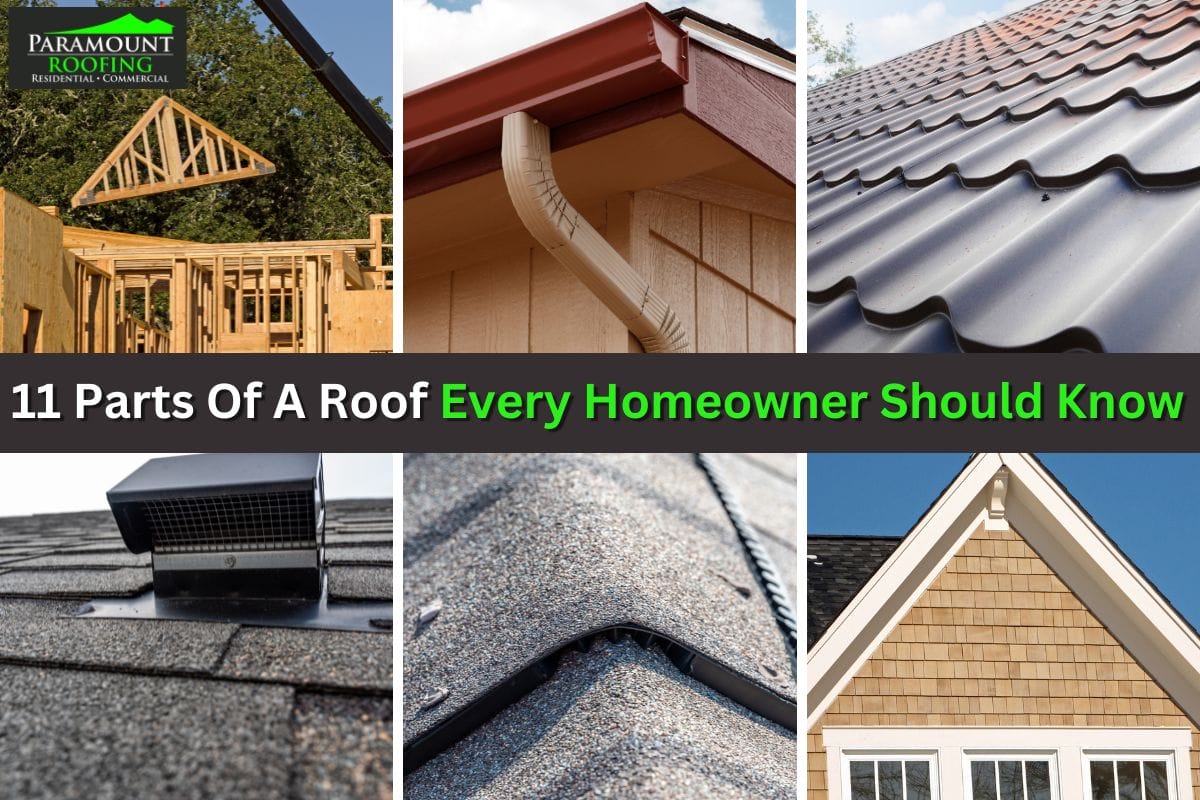Whether you’re replacing your old roof or building a new house, it’s important to be aware of the major parts of a roof. This knowledge is important for homeowners who want a roof that can handle tough weather with ease, demands less maintenance, and stays beautiful for decades.
At Paramount Roofing, our goal is to help homeowners understand the crucial details about their home’s roofing system. So today, we’re here with this blog post, where we’ll explain the composition of a roof and the role of the different components.
Let’s get started!
Significant Parts Of A House Roof
A roof is primarily composed of these parts, starting with a wooden structure and ending at gutters and downspouts. Let’s dive into the details of each component.
#1 Trusses
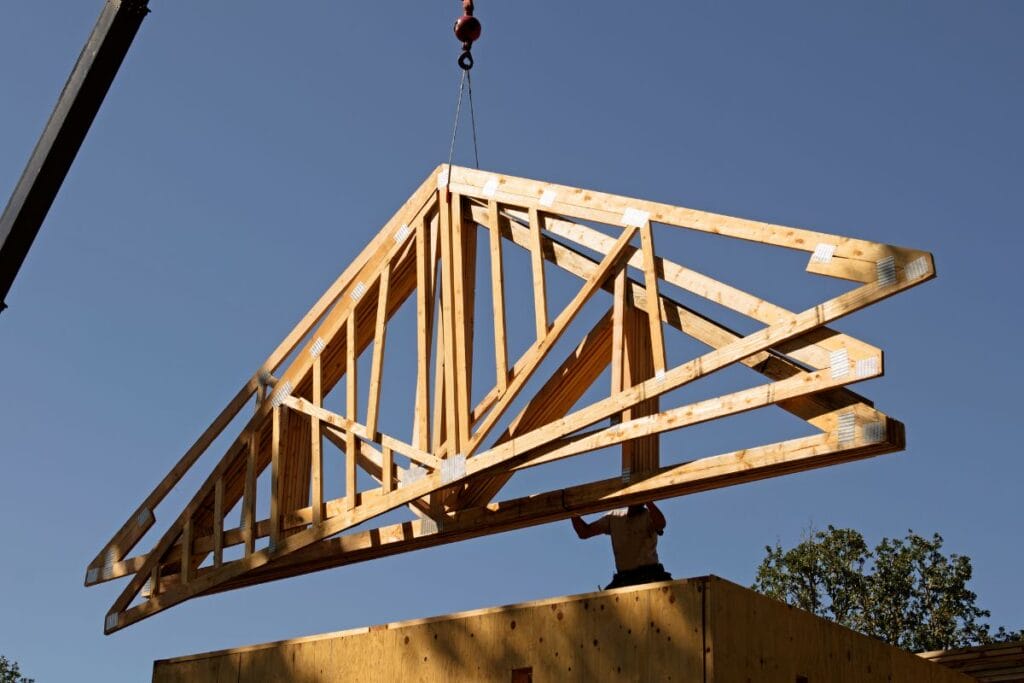
A truss, an integral part of a roof, refers to the framework that forms the core structure supporting all the other roofing elements. Primarily composed of several triangles made from high strength materials such as iron or wood, this formation provides stability and rigidity to your roofing system.
The main function of trusses is to distribute weight evenly across the structure, as the interlocking triangles leverage resilience against horizontal forces, so your roof remains sturdy no matter the weather conditions. It’s also important to note its role in creating attic space, which can be used for storage or additional living areas.
#2 Roof Deck
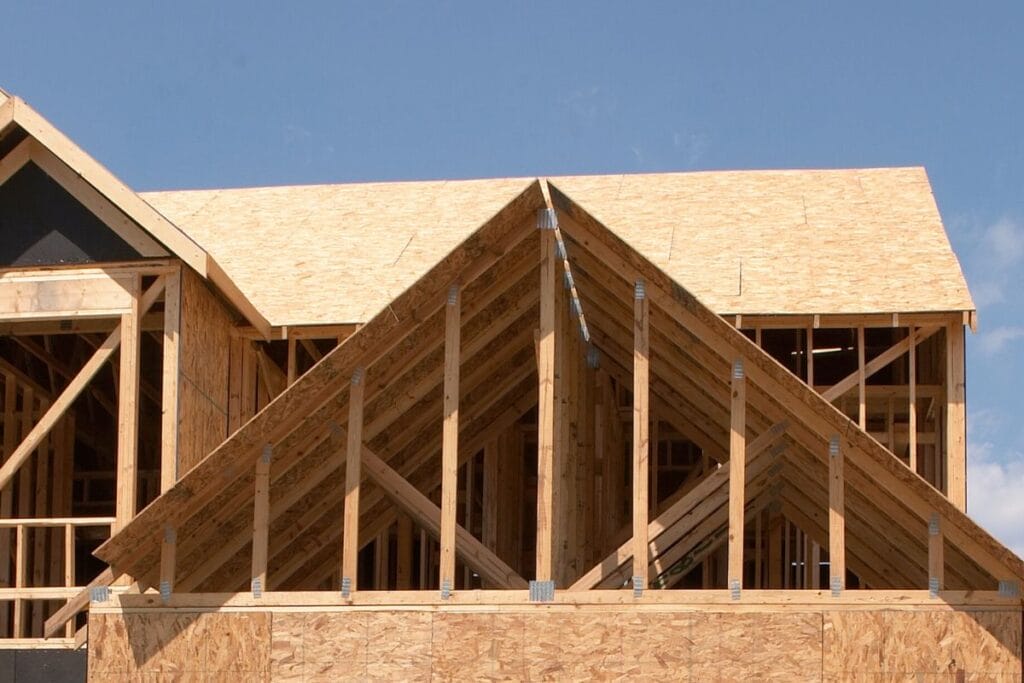
The roof deck is an underlying layer that braces the weight of everything above it – shingles, underlayment, tiles, etc. Not only does it bear these physical loads, but it also supports against environmental pressures like wind uplift.
Roof decks can be constructed out of different materials based on individual requirements and preferences. The three most common materials include oriented strand board (OSB), plywood, and metal.
- OSB: Prevalently used in residential settings, OSB is composed of intertwined layered wood, which grants it great strength while remaining cost effective.
- Plywood: A sturdier option than OSB, though more expensive, plywood comprises several thin layers of wood bound together that enhance its structural strength.
- Metal: This material is commonly utilized in commercial buildings or heavy load conditions due to its high resilience and durability.
Each material has its unique properties, offering pros and cons depending on the climate conditions they’ll be exposed to or the load they’re supposed to shoulder.
#3 Underlayment
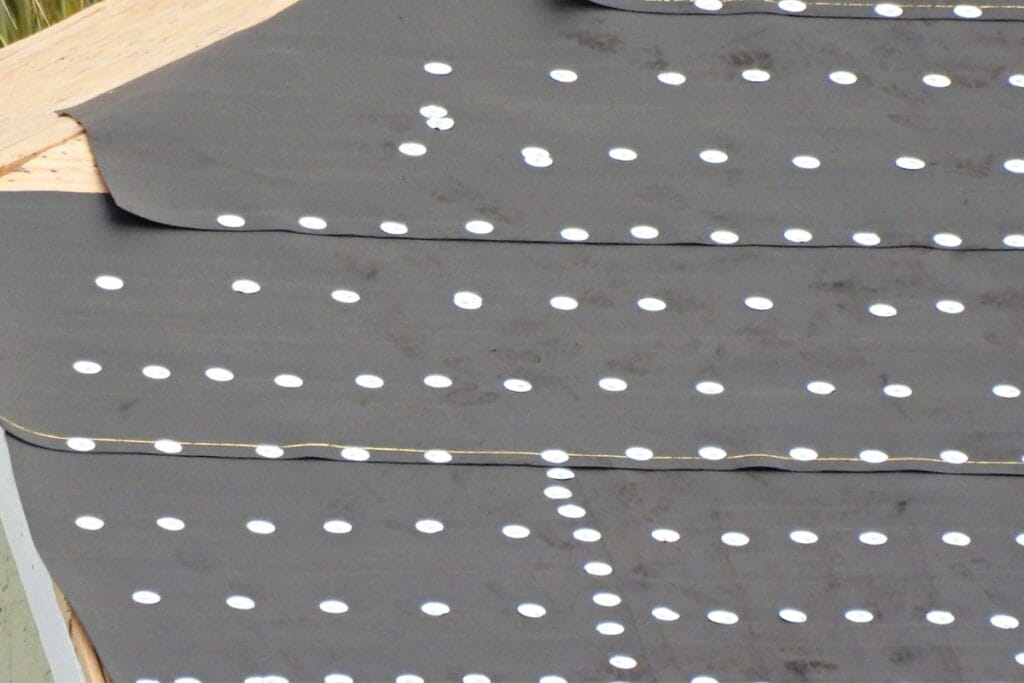
Underlayment is a waterproofing sheet installed above the deck, protecting the wood and attic during severe weather and from pest and water intrusion. This roof component not only safeguards your home from moisture related issues but also enhances its weather-resistance, reduces noise transmission, and provides superior thermal insulation.
Moreover, most building codes mandate its installation. It frequently acts as a fire-resistant layer, contributing to safety, and high quality underlayments can even extend roof longevity.
There are different types of underlayments, and each material has distinct features that allow it to cater to specific needs.
- Asphalt Saturated Felt: This type of underlayment was extremely popular before synthetics arrived on the scene. It is made with either a cellulose (paper), polyester, or fiberglass substrate combined with asphalt for waterproof or water-resistant finish depending on the percentage used.
- Synthetic Underlayments: Lighter yet stronger than their saturated felt counterparts, they are made up of polypropylene or polyester polymers. Choosing this type often means better resistance to heat and humidity and longer manufacturer warranties.
- Rubberized Underlayment: With adhesive backing, this underlayment self seals around nails, making a leak-resistant barrier. They come in varying quantities of asphalt, allowing homeowners to choose one based on their specific needs.
Keep in mind you should ideally check your preferred product’s ICC approval before the installation.
#4 Shingles
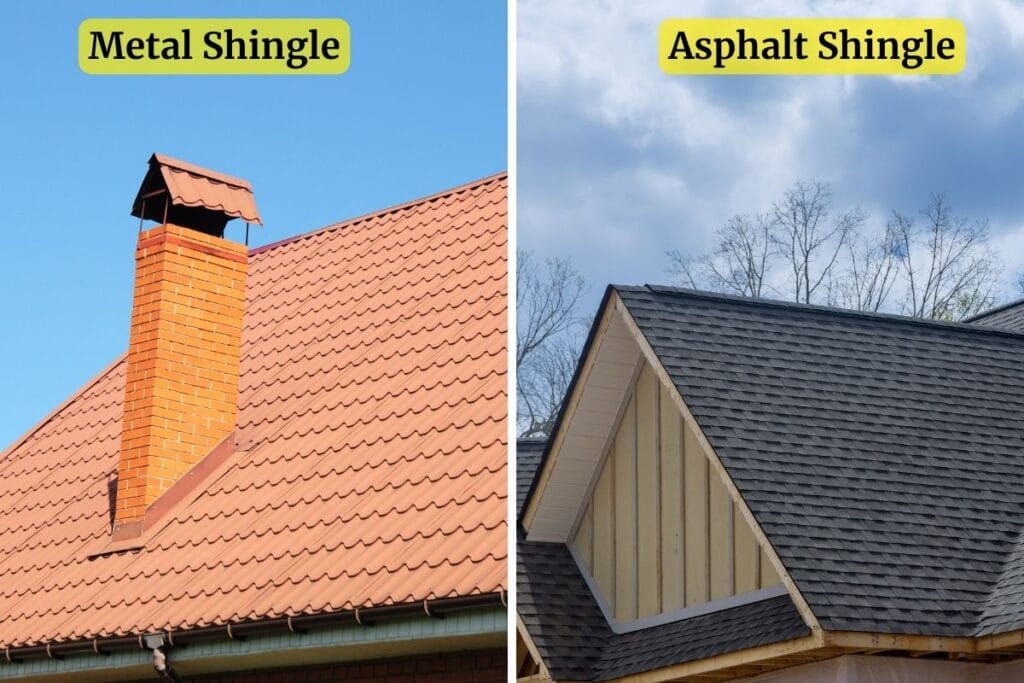
Shingles act as a protective barrier between your home and the external elements. They are overlaid from the bottom edge up towards the top of a roof, helping to guide rainwater off and away from your home. With this strategic arrangement, they stop water from seeping into the building structure.
Various materials can be used to manufacture shingles, allowing you to choose depending on your budget, aesthetic preferences, and the climate where you live. Each type of shingle comes with its own maintenance requirements and lifespan.
There’s quite a selection when it comes to types of shingles, let’s delve into some common ones:
- Asphalt Shingles: They stand out due to their affordability and vast color range. The downside is that they may not fare well in areas with extreme weather conditions since they’re susceptible to cracking.
- Wood Shingles: These are known for their natural look and environmental friendliness. Unfortunately, they come with high maintenance requirements and aren’t fire-resistant unless properly treated.
- Metal Shingles: Particularly resilient against most harsh conditions, metal shingles have great longevity but higher initial costs when compared with other alternatives.
- Slate Shingles: Known for their superior durability, slate has an extended lifespan exceeding 60 years. But they come with a high price tag, making them less popular among homeowners.
- Solar Shingles: They are an emerging alternative attracting homeowners favoring renewable energy. While their installation costs run high, they can offer significant long term savings through reduced energy bills.
#5 Vents
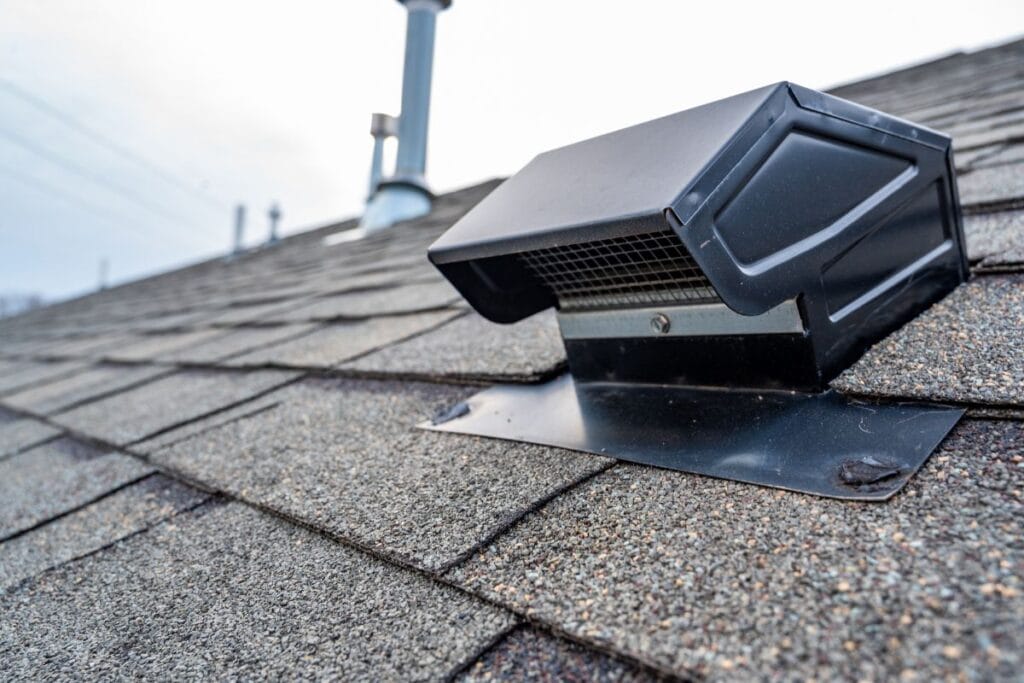
Proper roof ventilation, within the broader context of home construction, stands apart as a key feature for multiple reasons. To begin, it ensures there is continuous airflow in and out of your attic space. This system works to keep temperatures balanced and aids in maintaining structural integrity while improving the comfort levels inside the house.
Improper or inadequate ventilation can lead to premature aging and damage to other roofing materials due to heat build up during warmer months. It’s also known to contribute to ice dam formations in winter as hot air from inside rises towards the top of an inadequately ventilated ceiling — subsequently melting snow, which refreezes at cold edges of the roof.
While there are numerous different types of roof vents, two of the most popular options are soffit vents and ridge vents.
- Soffit Vents: As part of a balanced system, these vents situated on the underside of the eaves (the soffit) facilitate the intake of cool air into the attic space. They work hand in hand with higher placed exhaust features like ridge or box vents.
- Ridge Vents: Installed along the highest point of a roof (the ridge), these vents allow rising warm air to exit the space. Ridge vents coupled with soffit vents contribute significantly to preventing unnecessary heat build up and consequential energy inefficiencies.
#6 Ridge Caps
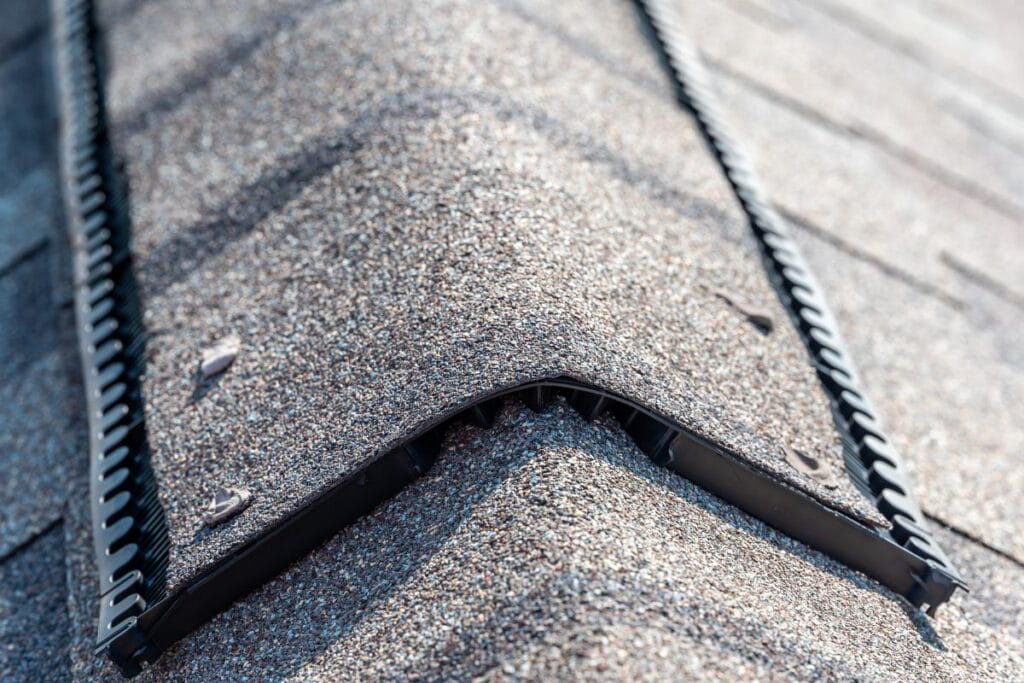
Ridge caps serve two main purposes: protection and aesthetics. Positioned at the peak where two sloped roof planes meet, they act as a barrier against adverse weather conditions, especially rain and snow, that could otherwise infiltrate this part of the roof. On top of its protective role, ridge caps give roofs a clean, finished look that enhances your home’s overall curb appeal. They are often made of the same materials as the rest of your roof, such as asphalt shingle, metal, tile, or wood shake, and are meant to blend in.
For these reasons, ridge caps are integral parts of a leak free roofing system. Moreover, their contribution to preserving your property’s value over time is unparalleled.
#7 Flashing
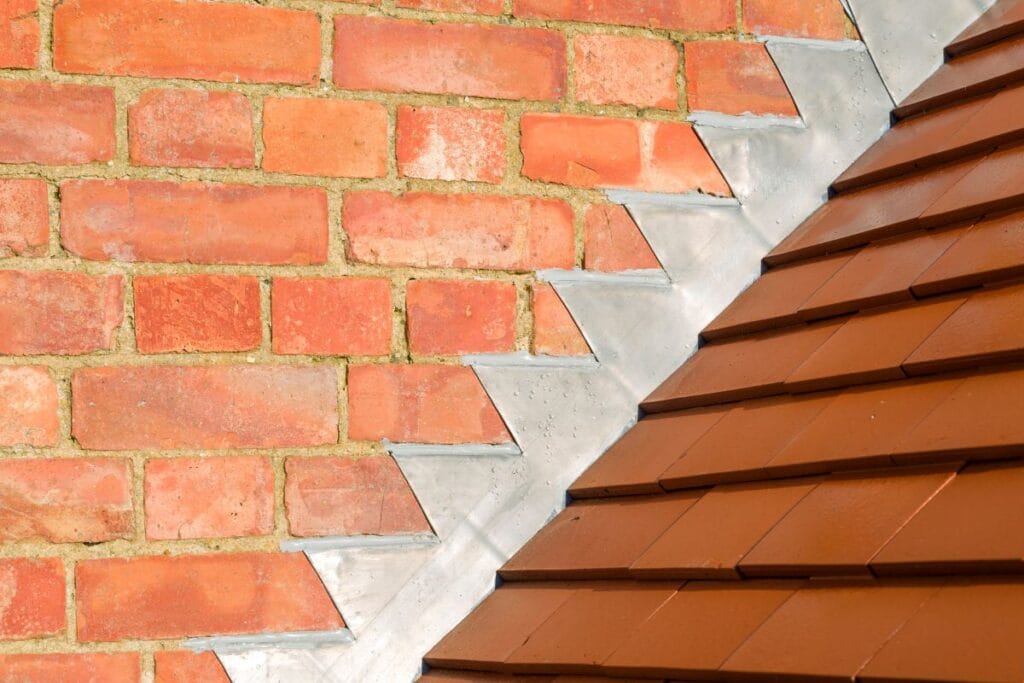
Flashing, often made from thin pieces of metal like galvanized steel, copper, or aluminum, helps direct water away from critical areas on the roof, like vents, skylights, valleys, chimneys, and more. Essentially, this component of a roof deters water infiltration by sealing off gaps at intersections and joints. If you’ve ever wondered how the top of your roof maintains its resilience against harsh weather elements, flashing deserves most of the credit.
The importance of flashing stems from maintaining a dry interior environment. Leaks can lead to serious issues such as mold growth, wood rot, and damp insulation materials, which can compromise energy efficiency and result in high repair costs. Plus, proper roof flashing enhances energy efficiency by mitigating unwarranted air leakage, which means potential savings on heating and cooling bills.
#8 Drip Edge
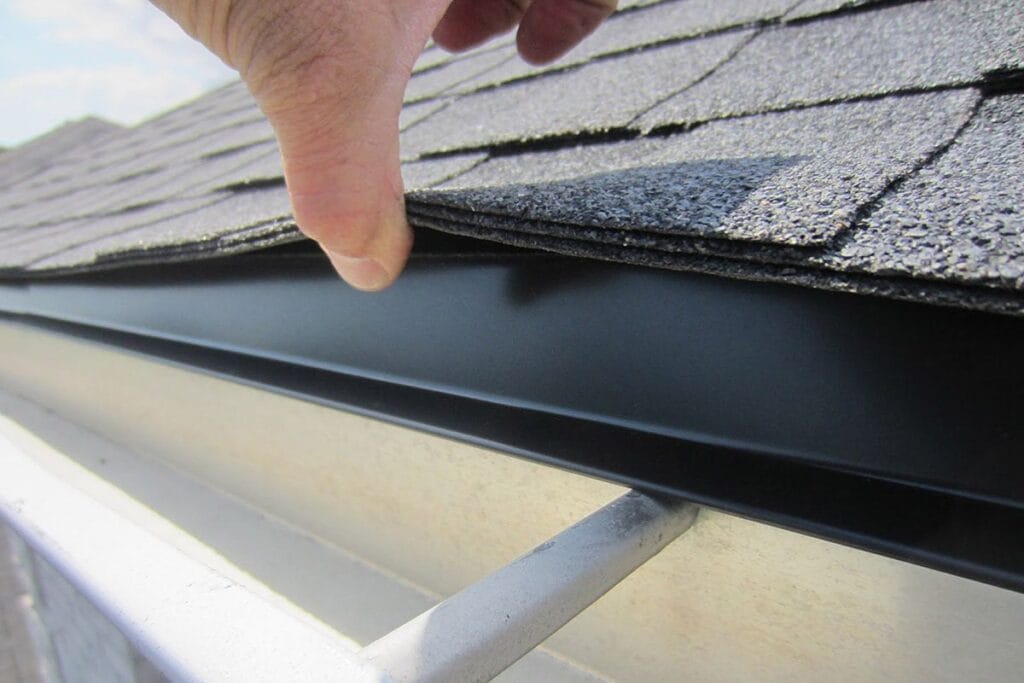
A drip edge is a type of flashing and is a metal strip that extends beyond the end of the roof. It’s typically seen along the edges or eaves of the roof. Even though it might seem insignificant compared to more prominent components like shingles or gutters, its role is highly critical.
The fundamental job of the drip edge is to guide water off your roofing system and into the gutters, preventing it from backing up under the shingles. This simple process effectively protects your fascia board (found beneath your gutter) from water damage, saving you from costly repairs over time.
#9 Fascia Board
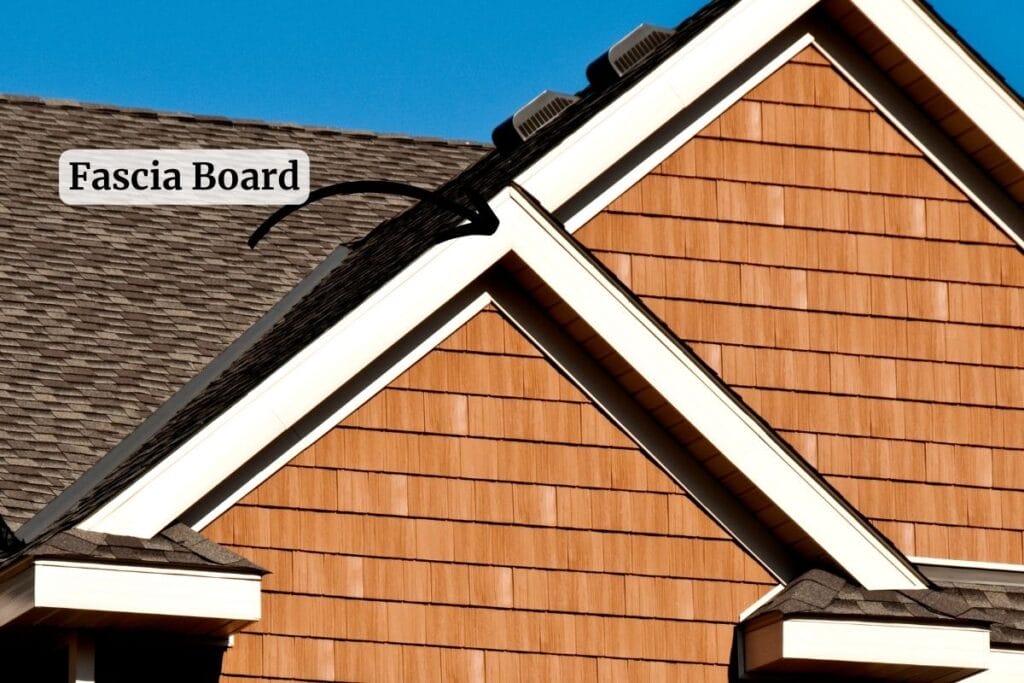
The fascia board is also a crucial component of a roof. It’s the horizontal board that you see running along the lower edge of the roofing system, directly attached to the truss ends. The fascia board might seem insignificant at first glance, however it serves a few essential roles.
Fascia boards provide a smooth and neat finish to the edges of your roof. When painted or crafted from high quality material like vinyl or aluminum, they add a much needed aesthetic boost to any residential property.
Being positioned at the lowest edge makes them act as a barrier between the elements and your roof deck. This means that these boards serve as your roofing system’s first line of defense against weather such as rain or snow, which could cause severe damage over time if not addressed.
The fascia board also offers solid support for the gutters, ensuring they stay tightly in place throughout intense storms or extreme downpours.
#10 Soffit
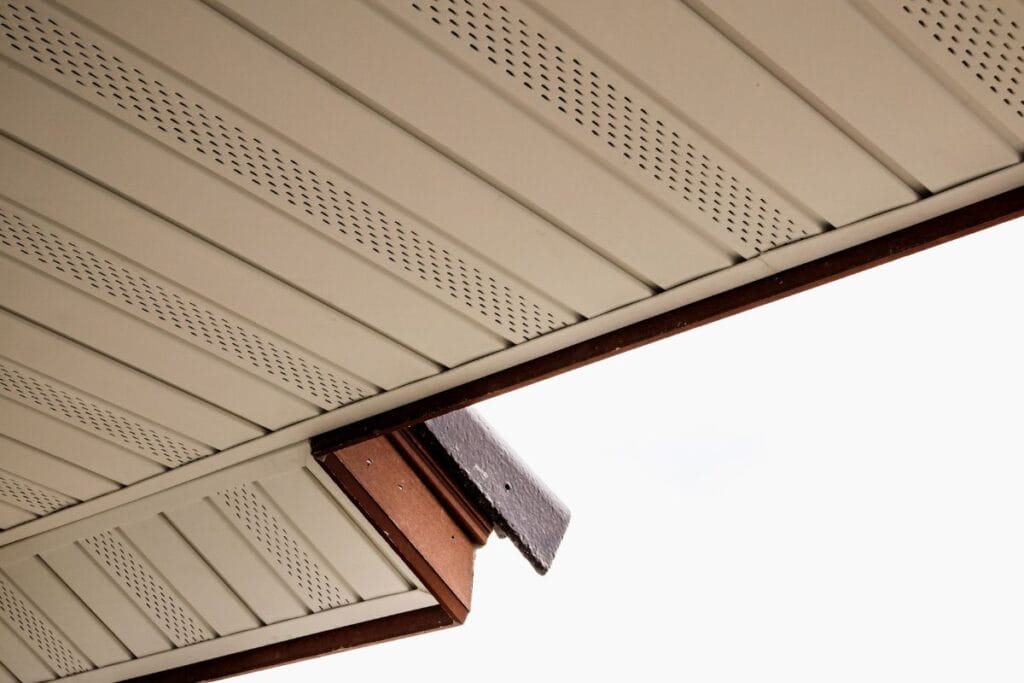
Often overlooked, soffits play an essential role in protecting other roof components known as the eaves (where the roofing material hangs past the siding). They act as vital barriers between the elements like rain and wind, keeping them away from your home’s interior.
Additionally, one remarkable feature of soffits lies in their ability to aid in ventilation. As mentioned above, soffit vents can ensure regulated attic temperatures, which prevents issues such as mold growth and ice dams during winter.
Moreover, when properly installed and maintained, they add charm to houses and consequently improve their curb appeal.
#11 Gutters and Downspouts
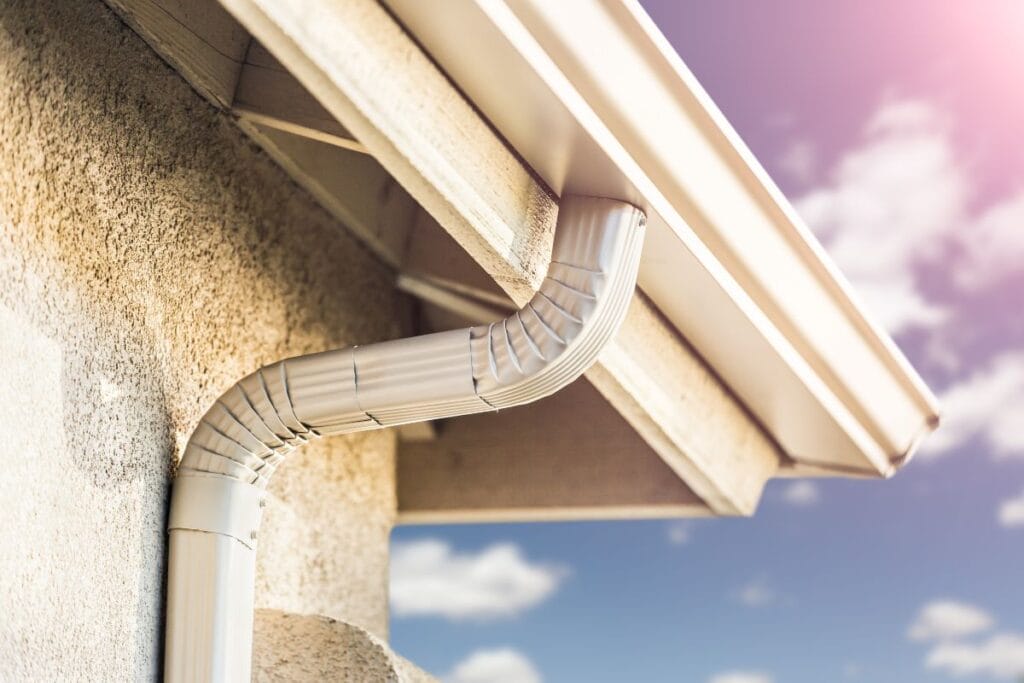
Gutters are not the most glamorous part of the roofing system, but they’re important. Situated at the edge of a roof, they play an indispensable role in protecting your home from water damage. They collect rainwater falling onto your roof, guiding it towards downspouts that funnel it safely away from your home’s foundation.
Selecting high quality gutter systems is just as important as it is for other parts of a roof. Depending on their location and exposure to various elements, different materials such as aluminum, steel, or even copper are suitable for gutters.
Downspouts work directly with gutters and are usually crafted from similar materials like aluminum and copper. Downspouts ensure that once captured by the gutter system, water finds its way efficiently down to the ground far from places where it could cause substantial harm like the foundation or a porch.
We hope this information helps with your next roofing project. If you need professional guidance or roofing services in Metro Detroit, MI, we are here to help.
Schedule A Free Roofing Consultation In Metro Detroit With Our Trusted Roofing Experts
At Paramount Roofing, we’ve been installing new roofs and upgrading old ones for years. We are proud of our experienced and talented crew, which makes sure your home is protected and looks beautiful with the perfect roofing system. If you are looking for reliable and honest residential roofing services in Metro Detroit, MI, we’re here to work with you. Call us at (586) 690-0227 and schedule a free roof consultation with our experts today!
 Free Estimate
Free Estimate
 Request Service
Request Service Locations
Locations 
